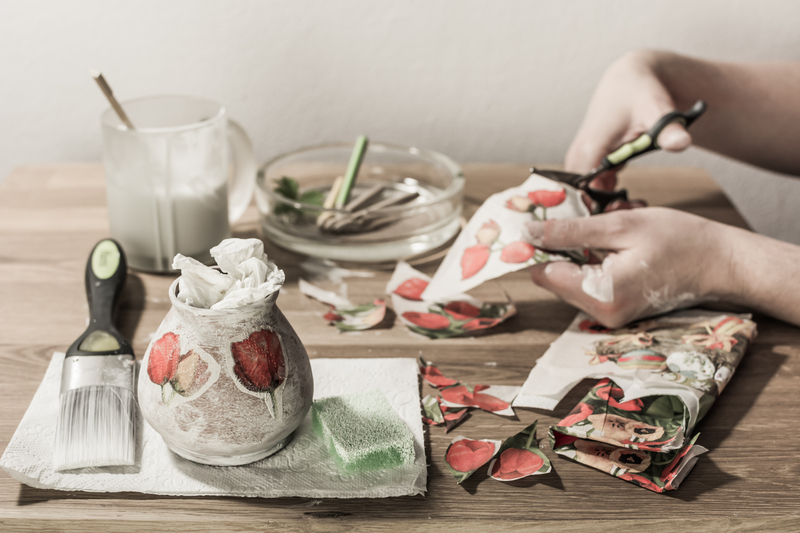Integrate Clutter Control into Your Daily Routine: The Ultimate Guide
In today's fast-paced world, maintaining an organized and clutter-free environment can dramatically improve productivity, reduce stress, and enhance your overall well-being. Integrating clutter control into your daily routine isn't just about stacking boxes or tidying up once a month--it's about instilling mindful habits that keep your space consistently functional and welcoming. In this comprehensive guide, we'll explore actionable strategies, the benefits of daily decluttering, and how you can seamlessly embed clutter management into your everyday life.
Why Prioritize Clutter Control in Your Life?
- Reduced Stress: A mess-free environment alleviates feelings of overwhelm and boosts mental clarity.
- Enhanced Productivity: Knowing where everything resides saves time and increases efficiency.
- Improved Home Aesthetics: A tidy space is visually pleasing and inviting to both residents and guests.
- Increased Well-being: Studies show physical spaces influence mood and emotional health, making consistency in clutter control essential.
Embracing clutter management as a fundamental component of your daily routine unlocks these life-changing benefits, ensuring your personal and professional environments foster growth, peace, and creativity.

Understanding the Roots of Clutter
To successfully integrate clutter control into your daily routine, you must first recognize the main causes of clutter in your home or workspace. Common sources include:
- Accumulation of unused or unnecessary items
- Lack of efficient storage solutions
- Poor organizational habits
- Sentimental attachments to objects
By identifying what leads to clutter, you can target these problem areas with effective strategies tailored to your needs.
Proven Strategies to Controlling Clutter Daily
1. Set Clear Intentions and Goals
Before you begin, define your objectives. Ask yourself: What does clutter control mean for me? Decide which areas need the most attention and set measurable targets--perhaps five minutes a day decluttering your desk, or a nightly quick sweep of the kitchen.
- Start small: Focus on one area each day.
- Be realistic: Don't aim for perfection--consistency beats intensity.
- Stay motivated: Keep a checklist and mark your progress.
2. Declutter as You Go
Instead of reserving hours each weekend for tidying, make decluttering part of your daily activities. Immediately return items to their proper places after use, recycle junk mail on arrival, and wipe counters after cooking meals. This approach embeds clutter management into your routines, making the task less overwhelming.
3. Adopt the 'One In, One Out' Rule
Control accumulation by committing to remove one old item for every new item you bring into your space. This simple habit is invaluable for maintaining daily clutter prevention--especially for clothes, books, and kitchen gadgets.
4. Optimize and Label Storage Spaces
A major hurdle to effective clutter control is the lack of organized storage. Invest in bins, baskets, drawer organizers, and shelf dividers. Label each container for quick, effortless access, so every item has a designated home.
- Group similar items together
- Utilize vertical storage to maximize space
- Store frequently used items at eye level
5. Schedule Daily Clutter Control Sessions
Allocate a specific time each day, even if it's just 10-15 minutes, for proactive tidying. Whether it's before bed, after breakfast, or during a work break, consistency is key to integrating clutter control into your daily routine for good. Set reminders on your phone or calendar if needed.
6. Create Drop Zones for High-Traffic Areas
Kitchens, entryways, and living rooms often bear the brunt of everyday mess. Designate drop zones with baskets or trays for keys, mail, and bags. Regularly review these areas to prevent the buildup of clutter.
7. Practice Mindful Consumption
Pause before each purchase. Ask yourself, Do I truly need this? This awareness slows down unnecessary accumulation and reinforces your clutter control efforts at the source.
Daily Routine Examples for Seamless Clutter Management
Morning Clutter Control Habits
- Make your bed: Sets a productive tone and instantly tidies your space.
- Sort mail immediately: Toss junk and file important letters.
- Reset surfaces: Clear kitchen counters and bathroom sinks after use.
Midday Decluttering Touchpoints
- Desk check: File papers, put away non-essential items, and tidy supplies.
- Quick closet sweep: Hang up clothes or return them to the laundry basket.
Evening Clutter Management Routine
- 10-minute tidy: Pick up items from floors, sofas, and worktops before bed.
- Reset living areas: Plump cushions, adjust throws, and stack remotes.
- Prepare for tomorrow: Lay out clothes, organize bags, and clear the entryway.
These micro-habits may seem minor alone, but they build up to a significant impact over time, allowing you to integrate clutter control effortlessly into your daily routine.
Digitally Declutter Your Life
Clutter isn't limited to physical objects. Digital clutter--from disorganized emails to unnecessary files and notifications--can be just as mentally draining. Apply the same principles:
- Unsubscribe from unneeded emails
- Create folders and label documents
- Regularly backup and delete old files or apps
- Reset your desktop at the end of each day
Embracing digital organization as a part of your daily routine ensures clarity and efficiency in all aspects of your life.
How to Stay Motivated: Turning Clutter Control Into a Habit
Celebrate Progress, Not Perfection
Focus on the journey. Rather than aiming for a pristine, magazine-ready home, recognize and celebrate daily steps toward less clutter. Small victories encourage consistent effort--reward yourself for sticking to your routine.
Track Your Achievements
- Use habit trackers: Apps or printable trackers can help reinforce consistency.
- Take before-and-after photos to visualize your progress.
- Keep a decluttering journal: Note feelings of accomplishment and areas for improvement.
Enlist Accountability Partners
Share your goals with family or friends, or form a group challenge. Having a support system propels motivation and provides external encouragement to maintain clutter control as part of your daily habits.
Teaching Kids and Family to Embrace Clutter Management
Fostering clutter control isn't just a solitary pursuit--it rapidly becomes more effective when the whole household participates. Teach children and partners the benefits and techniques for daily clutter maintenance:
- Assign age-appropriate tasks
- Involve everyone in daily or weekly decluttering sessions
- Lead by example
- Use visual aids like labeled bins, calendars, or progress stickers
Embedding clutter control into your family's routine teaches valuable life skills and keeps your shared environment peaceful and organized.
Common Pitfalls and How to Avoid Them
Procrastination
It's easy to defer decluttering for "later," but this habit compounds the chaos. The key to integrating clutter control into your everyday workflow is regular, bite-sized actions. Set a timer, start with just five minutes, and build momentum.
Sentimental Attachment
Letting go of emotionally-charged items is difficult. Consider photographing cherished objects before donating them, or limiting yourself to a single "memory box" for keepsakes.
Overwhelm from Large Projects
Tackle big areas by breaking them into manageable segments--drawers, shelves, or zones. Prioritize frequently-used spaces first, then progress outward.

Maintaining Momentum Long-Term
The secret to lasting success with ongoing clutter control is creating routines so ingrained they become second nature:
- Review storage systems monthly and adjust as your needs evolve
- Regularly donate or discard unneeded items
- Incorporate seasonal deep-cleans into your calendar
- Reflect on your progress to stay motivated
By making clutter control part of your lifestyle--not a once-in-a-while task--you'll enjoy an organized, stress-free environment every day.
Conclusion: Take the First Step to a Clutter-Free Daily Life
Integrating clutter control into your daily routine is entirely achievable with a strategic approach, minimal time investment, and mindful habits. Remember, the goal isn't perfection but progress--each small action brings you closer to an orderly, enjoyable living and working space. Adopt the strategies above, tailor them to your unique needs, and reap the undeniable physical, emotional, and psychological benefits.
Start today: Choose one tip from this article and put it into practice. You'll quickly discover that with consistent, intentional actions, clutter control becomes a seamless, rewarding part of your everyday life.
Additional Resources
- Books: Explore "The Life-Changing Magic of Tidying Up" by Marie Kondo or "Atomic Habits" by James Clear for further inspiration.
- Apps: Try Todoist, Tody, or Habitica for habit-building and clutter management assistance.
- Online Communities: Join forums, Facebook groups, or subreddits dedicated to decluttering and organizing for ongoing support.
Your journey to a clutter-free, organized life begins today--embrace these practices, and transform your environment one habit at a time!